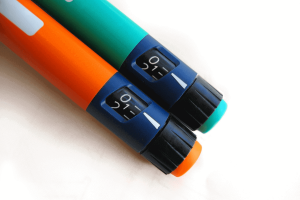It’s time we start talking about diabulimia
When we think eating disorders, our minds almost instantly conjure up thoughts of starvation, over-exercising, or binging and purging cycles. But there’s another kind of eating disorder that’s just as powerful. One that is estimated to affect hundreds of people with type 1 diabetes each year. It’s called diabulimia, and it may be more prevalent than you think.
What is diabulimia?
Diabulimia is an eating disorder in which people with type 1 diabetes purposely give themselves less insulin than they need as a means of losing weight. Weight loss happens because the sugars that people eat are flushed out of the body through urine.
It’s good to note that while diabulimia is most commonly found in teenagers or young adults, the condition can affect anyone–men, women, and even older adults. It’s also important to know that women with diabetes are three times more likely than women without the disease to develop an eating disorder.
Diabulimia is a tricky disease to study, because its prevalence has only recently started growing. The first article about diabetes and eating disorders was published in the 1970s and few have come out since. Today, diabulimia still isn’t recognized as an official medical term. And as a result, a search for it among popular medical journals likely won’t yield any results.
What are the symptoms?
Here are a couple major clues that indicate a diabetes-related eating disorder:
- Hyperglycemia
- A high A1c
- Changes in eating habits (people with diabulimia tend to eat more, as they can still lose weight)
- Low energy
- Dramatic weight loss
- Stress
- Excessive exercise
- Hiding food
- A fruity smell on the breath or in urine
- Obsession with food and body image
- Anxiety about weight




